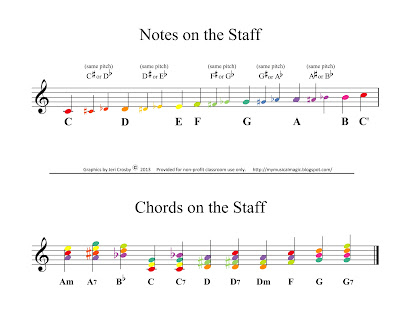 |
| Boom Pipes |
by Jeri Crosby
Boom pipes are a novel yet musical addition to my Orff instruments (substituting for bass bars) as well as to my Boomwhackers and home-made instrumentarium. Students (of all ages) LOVE these!
Use four-inch, double-walled drain
pipe (white plastic with black inner lining, which usually comes in ten-foot lengths). Buy a
four-inch end cap for each pipe and some adhesive. (Three ten-foot lengths will make
a full set. You can make a basic ‘bass bar’ set from two lengths.)
These measurements are
approximate. (It is best to cut a tiny bit long because a pipe that’s too short will be sharp and
difficult if not impossible to correct.) After initial cuts, check pitch with a tuner or match
to a piano. Sand or carefully shave with a paring or pocket knife to fine tune.
| C 50 ½ “ 128.3 cm (Cut from piece #1.) E 40 ½“ 102.9 cm (Cut from piece #1.) |
F# 35 ½ “
90.2 cm (Cut from piece #3.)
G 33 ½
“ 85.1 cm (Cut from piece #2.)A 29 ½“ 74.9 cm (Cut from piece #3.)
Bb 28 “ 71.1 cm (Cut from piece #3.)
B 26 ¼“ 66.7 cm (Cut from piece #1.)
C 24 ¾“ 62.9 cm (Cut from piece #3.)
The range of these instruments is from
two octaves below middle C to one
octave below middle C. (This is the same as bass
Boomwwhackers with Octavator caps
applied, but the volume and timbre are bolder.)
A printable version of instructions and picture is available here: http://www.teacherspayteachers.com/Product/Boom-Pipes-Recipe-Instructions-for-Making-Home-made-Bass-Set For color-coded music and activities, please check out my TeachersPayTeachers store: http://www.teacherspayteachers.com/Store/Musical-Magic
I'll be posting more home-made instrument ideas soon : )
|










